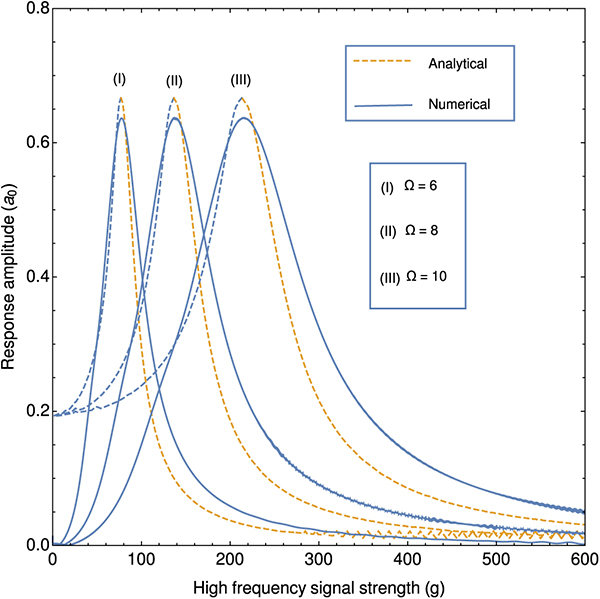EPJ B Highlight - Stimulating resonance with two very different forces
- Details
- Published on 25 February 2020

In some specialised oscillators, two driving forces with significantly different frequencies can work together to make the whole system resonate.
Widely studied in many different fields, ‘nonlinear’ systems can display excessively dramatic responses when the forces which cause them to vibrate are changed. Some of these systems are sensitive to changes in the very parameters which define their driving forces, and can be well described using mathematical equations. These ‘parametric’ oscillators have been widely researched in the past, but so far, few studies have investigated how they will respond to multiple driving forces. In new research published in EPJ B, Dhruba Banerjee and colleagues at Jadavpur University in Kolkata explore this case in detail for the first time. They show that some parametric oscillators can be made to resonate when tuned by a high driving frequency to match a separate, far lower frequency.
Since nonlinear oscillators can be found across a wide array of fields, from quantum mechanics to climate modelling, the discovery could enable researchers from many different backgrounds to better understand the systems they work with. In their study, Banerjee’s team used both simulations and experiments to explore the behaviours of ‘bistable’ oscillators, which can flip between two stable states of vibration. To do this, they subjected a bistable parametric system to two very different driving frequencies: one high, the other far lower.
Banerjee and colleagues made their calculations using ‘perturbation theory’, which finds approximate solutions to complex problems, starting from exact solutions to similar yet simpler problems. Through this technique, they showed that as the strength of a bistable parametric system’s high-frequency driving force is varied, its mathematically predictable, nonlinear response to a separate, low-frequency driving force varies in turn. Importantly, this means that the higher frequency’s strength can be tuned so that the oscillator’s frequency matches that of the low frequency driving force, causing it to resonate. The discovery could open up new opportunities for future studies of how nonlinear oscillators respond in a wide range of situations.
S Roy, D Das, D Banerjee (2020), Nonlinear Response of a Parametric Bistable Oscillator with Multiple Excitations, European Physical Journal B 93:12, DOI: 10.1140/epjb/e2019-100414-5




